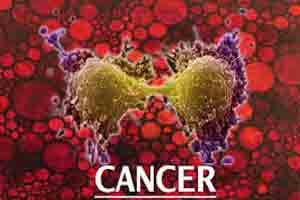- Home
- Editorial
- News
- Practice Guidelines
- Anesthesiology Guidelines
- Cancer Guidelines
- Cardiac Sciences Guidelines
- Critical Care Guidelines
- Dentistry Guidelines
- Dermatology Guidelines
- Diabetes and Endo Guidelines
- Diagnostics Guidelines
- ENT Guidelines
- Featured Practice Guidelines
- Gastroenterology Guidelines
- Geriatrics Guidelines
- Medicine Guidelines
- Nephrology Guidelines
- Neurosciences Guidelines
- Obs and Gynae Guidelines
- Ophthalmology Guidelines
- Orthopaedics Guidelines
- Paediatrics Guidelines
- Psychiatry Guidelines
- Pulmonology Guidelines
- Radiology Guidelines
- Surgery Guidelines
- Urology Guidelines
Living in Very Cold Climate linked to Increased Cancer Risk

It is well known that cancer incidence is increasing worldwide, with pockets of human populations and geographical locations seemingly at higher risk than others.
Researcher Konstantinos Voskarides, Ph.D., of the Univesity of Cyrpus' Medical School, noted that populations living in very low temperatures, like in Denmark and Norway, had among the highest incidences of cancer in the world.
Now, in a new paper in the advanced online edition of the journal Molecular Biology and Evolution, he has advanced a new hypothesis: there is an evolutionary relationship that exists between adaptation at extreme environmental conditions -- like cold and high altitude -- and increased cancer risk in humans.
"The findings of this study provide evidence that genetic variants found to be beneficial in extreme environments, can also predispose to cancer," said Voskarides. "Cell resistance at low temperatures and at high altitude probably increases the probability of malignancy. This effect hardly could be filtered out by natural selection since most cancers appear later on in age after most people have their children."
Voskarides focused on the effect of low temperatures, either within Arctic/Scandinavian climates or high altitudes. Voskarides' analyses focused on the relationship between cancer risk and local average annual temperatures. He concluded that the extremely cold environment contributed to the cancer risk.
To do so, Voskarides carefully examined the most accurate and reliable data of worldwide cancer incidence (the GLOBOCAN-2012 database permits a variety of incidence/prevalence analysis per country or per cancer type, as well as sifting through genetic clues among 247 different cancer genome-wide association studies. Additionally, he probed the available literature bibliographic cancer incidence and genetic data for human populations living at extreme cold and extreme high-altitudes.
A striking pattern began to emerge, with the highest incidence of certain cancers linked to those populations living in the coldest environments. Additionally, analysis of 186 human populations showed a great linearity of high cancer incidence with the lower the environmental temperature.
"These data show that these populations exhibit extremely high cancer incidence, especially for lung, breast and colorectal cancer," said Voskarides.
The genetic evidence was also clear and highly significant. Genes that are under selection to populations in order to survive under extreme environmental conditions, also predispose for cancer.
Among the highest cancer associations with genes under selection is colorectal cancer for Natives Americans and Siberian Eskimos, esophageal cancer and lung cancer for Siberian Eskimos, leukemia for Oromi (a high-altitude population in Ethiopia) and a variety of cancers for high-altitude dwelling Andeans-Tibetans.
"Evidence was found that cancer rates have been increased in those populations through natural selection procedures," said Voskarides. "This is the first study that provides evidence that high cancer risk may be a result of evolutionary adaptation in certain environmental conditions."
Another finding of this study is that natural selection has favoured especially tumour suppressor genes in those populations instead of oncogenes. This is in accordance with previous studies that showed that mutations in p53 (the most frequently mutated gene in cancers) help animals to survive at very high altitude.
"It seems that the populations segregated under the concept of extreme environment - extreme cancer risk," said Voskarides.
For scientists pursuing the confluence of the environment and genetic on cancer risk, the new study will open a new avenue for exploring some of the key adaptive forces that could be driving cancer epidemiology.

Disclaimer: This site is primarily intended for healthcare professionals. Any content/information on this website does not replace the advice of medical and/or health professionals and should not be construed as medical/diagnostic advice/endorsement or prescription. Use of this site is subject to our terms of use, privacy policy, advertisement policy. © 2020 Minerva Medical Treatment Pvt Ltd